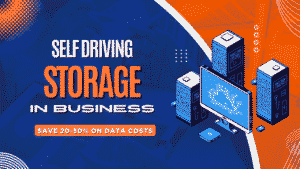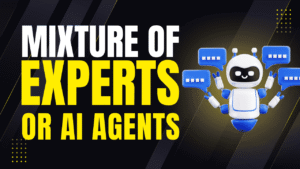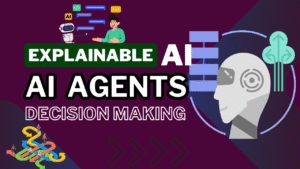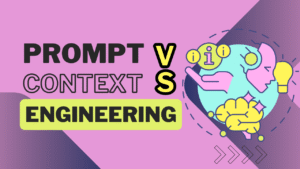In today’s fast-paced world of artificial intelligence, protocols are the unsung heroes that make AI systems smarter and more collaborative. They act like the rules of a game, ensuring AI models and agents can talk to data sources or each other seamlessly. Three standout protocols shaping this space are the Model Context Protocol (MCP), the Agent2Agent Protocol (A2A), and the Agent Connect Protocol (ACP). Each has a unique role: MCP helps AI models tap into external data, A2A enables AI agents to work together across platforms, and ACP ensures fast, local collaboration.
This article explains these AI protocols in simple terms, compares MCP with A2A and ACP, and shows how they fit into the broader AI ecosystem, using analogies, examples, and a handy table to make it all crystal clear.
On This Page
Table of Contents
What is MCP?
The Model Context Protocol (MCP), developed by Anthropic, is like a library card for AI assistants. Just as a library card lets you borrow books from different sections, MCP allows AI models to access various data sources—think databases, APIs, or file systems—to fetch real-time information. This makes their responses more accurate and relevant.
Imagine a customer support AI helping a representative. With MCP, it can pull up a customer’s purchase history or support tickets from a company’s CRM system (Anthropic MCP). This instant access to fresh data means the AI can offer personalized help, like suggesting a solution based on past interactions.
Key Features of MCP
- Standardized Integration: Connects AI to diverse data sources without needing custom code for each one.
- Real-time Data Access: Fetches current information, ensuring AI responses reflect the latest data.
- Flexibility: Works with a wide range of tools and systems, from cloud APIs to local files.
However, MCP is still new, so its ecosystem is growing, and setting up the servers that provide data might take some effort.
Example in Action
Suppose you’re building a chatbot for a retail store. Using MCP, the chatbot can query the store’s inventory database to check if a product is in stock, then respond to a customer’s question instantly. This is like a librarian (the AI) using a library card (MCP) to find a specific book (data) for you.
What is A2A?
The Agent2Agent Protocol (A2A), introduced by Google, is like a conference call for AI agents. It lets different AI agents—each with their own skills—communicate, share information, and tackle tasks together, even if they’re built on different platforms (Google A2A). This is perfect for complex workflows where multiple agents need to collaborate.
Picture a supply chain management system. One AI agent monitors inventory levels, another forecasts demand, and a third optimizes delivery routes. A2A enables these agents to exchange data and decisions, ensuring the supply chain runs smoothly, like team members brainstorming in a meeting.
Key Features of A2A
- Cross-platform Collaboration: Allows agents from different systems or vendors to work together.
- Task Coordination: Manages task delegation, so agents can divide and conquer complex jobs.
- Web-native Implementation: Uses standard web tech like HTTP and JSON-RPC, making it easy to integrate.
A2A shines in enterprise settings, where AI agents need to automate intricate processes across departments or organizations.
Example in Action
In a project management app, one AI agent schedules meetings, another assigns tasks, and a third tracks progress. A2A lets them share updates, like the scheduler informing the task assigner about a team member’s availability, ensuring everything stays on track.
What is ACP?
The Agent Connect Protocol (ACP) is like a local network in an office, enabling AI agents to communicate quickly and securely in the same environment. Developed by BeeAI and IBM, ACP is designed for real-time, low-latency interactions, especially in edge computing scenarios where privacy and speed are critical (ACP vs MCP).
Think of a smart home where AI agents control lighting, heating, and security cameras. ACP allows these agents to coordinate instantly—say, dimming lights when the security system detects no one’s home—without relying on the cloud.
Key Features of ACP
- Local Communication: Built for agents in the same runtime or nearby devices, reducing delays.
- Real-time Interaction: Uses fast, event-driven messaging for immediate responses.
- Privacy and Security: Keeps data local, ideal for sensitive applications.
ACP is perfect for edge devices, like IoT systems or industrial automation, where quick decisions and data privacy matter most.
Example in Action
In a factory, AI agents manage robotic arms and sensors. If a sensor detects a fault, ACP enables the sensor’s agent to alert the robotic arm’s agent instantly, halting production to prevent errors, all without sending data to a distant server.
Comparing MCP with A2A and ACP
While MCP, A2A, and ACP are all part of the AI protocol ecosystem, they have distinct roles:
- MCP focuses on giving individual AI models access to external data sources, enhancing their ability to provide informed responses. It’s about making one AI smarter by connecting it to the world’s information.
- A2A and ACP are about enabling collaboration between multiple AI agents, but they target different environments:
- A2A is tailored for cloud-based, cross-platform teamwork, ideal for distributed systems like enterprise workflows.
- ACP excels in local, edge-based settings, where low latency and privacy are key.
Here’s a quick analogy to sum it up:
- MCP is like a student (AI model) using a library card to access books (data) for a better essay.
- A2A is like a group of experts (agents) on a video call, sharing ideas to solve a problem.
- ACP is like workers (agents) on a factory floor, shouting instructions to each other for instant coordination.
When to Use Each
- MCP: Choose MCP when your AI needs to pull in external data, like a financial AI accessing stock market APIs for real-time trading advice.
- A2A: Opt for A2A when multiple AI agents need to collaborate across platforms, such as in a logistics system where agents handle shipping, tracking, and billing.
- ACP: Use ACP for local, time-sensitive tasks, like AI agents in a self-driving car coordinating sensors and brakes in real-time.
Comparison Table
| Protocol | Primary Focus | Environment | Key Use Cases |
|---|---|---|---|
| MCP | Data access for AI models | Any (cloud or local) | Enhancing AI responses with external data |
| A2A | Inter-agent communication | Cloud-based | Collaboration across platforms |
| ACP | Inter-agent communication | Local/edge | Real-time, low-latency collaboration |
How These Protocols Work Together
These protocols aren’t rivals—they can team up to create powerful AI systems. For example, an AI agent might use MCP to fetch customer data from a database, then use A2A to share it with another agent that generates a personalized email. In a local retail store, agents could use MCP to check inventory, then use ACP to coordinate with on-site robots to restock shelves.
This layered approach is like a well-orchestrated play: MCP provides the script (data), A2A directs the actors (agents) across stages, and ACP ensures quick cues for local performers. Together, they enable scalable, flexible AI ecosystems that can handle complex tasks efficiently.
Example of Combined Use
In a healthcare system:
- An AI uses MCP to access patient records from a hospital database.
- It shares the data via A2A with a diagnostic AI agent that analyzes symptoms.
- In a local clinic, ACP enables on-site agents to coordinate equipment and staff based on the diagnosis, all in real-time.
This synergy shows how standardized protocols can transform AI from isolated tools into interconnected, intelligent networks.
Conclusion
As AI becomes a cornerstone of technology and business, protocols like MCP, A2A, and ACP are paving the way for smarter, more collaborative systems. MCP equips AI models with the context they need to shine, A2A fosters teamwork across platforms, and ACP ensures fast, private local interactions. By understanding their strengths and how they complement each other, developers and businesses can build AI solutions that are powerful, adaptable, and ready for the future. Whether you’re enhancing a single AI or orchestrating a fleet of agents, these protocols are your toolkit for success in the AI ecosystem.
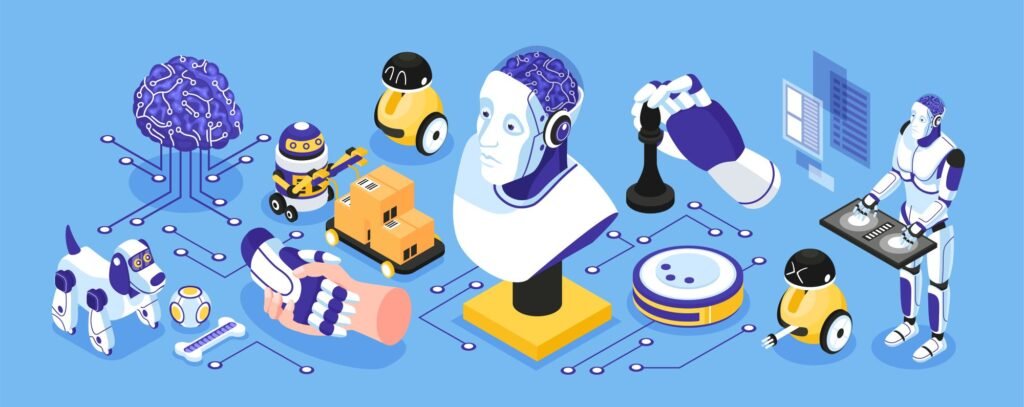
FAQs
What is the Model Context Protocol (MCP) and how does it help AI systems?
Answer: The Model Context Protocol (MCP) is like a universal library card for AI models. Developed by Anthropic, it allows AI systems to connect to external data sources—such as databases, APIs, or file systems—to fetch real-time information. This makes AI responses more accurate and relevant. For example, a customer service chatbot can use MCP to check a customer’s purchase history from a company’s CRM system, ensuring it provides personalized help (Anthropic MCP). By standardizing how AI accesses data, MCP simplifies integration and boosts performance.
What is the Agent2Agent Protocol (A2A) and what can it do for AI agents?
Answer: The Agent2Agent Protocol (A2A), introduced by Google, is like a conference call for AI agents. It enables different AI agents—each with unique skills—to communicate, share information, and collaborate across various platforms (Google A2A). For instance, in a supply chain, one agent might track inventory while another optimizes delivery routes. A2A lets them exchange data to streamline operations. It’s designed for enterprise workflows, where multiple agents need to work together seamlessly.
What is the Agent Connect Protocol (ACP) and where is it best used?
Answer: The Agent Connect Protocol (ACP), supported by AGNTCY, is like a local walkie-talkie system for AI agents. It’s designed for fast, local communication between agents in the same environment, especially in edge computing scenarios where speed and privacy are critical (ACP Specification). Think of a smart home where AI agents control lighting, heating, and security. ACP allows them to coordinate instantly—say, dimming lights when no one’s home—without relying on the cloud. It’s perfect for IoT devices or industrial automation.
How do MCP, A2A, and ACP differ from each other?
Answer: Each protocol has a unique role in the AI ecosystem:
MCP helps individual AI models access external data sources to provide better answers. It’s about making one AI smarter by connecting it to the world’s information.
A2A enables collaboration between AI agents across different platforms, ideal for cloud-based, enterprise-level tasks.
ACP focuses on local, real-time communication between agents, suited for edge environments where speed and privacy matter.
Analogy: Think of MCP as a student using a library card to access books (data) for a better essay. A2A is like a group of experts on a video call, sharing ideas to solve a problem. ACP is like workers on a factory floor, shouting instructions to each other for instant coordination (MCP vs ACP).
When should I choose MCP over A2A or ACP for my project?
Answer: Choose MCP if your goal is to connect an AI model to external data sources for richer, more accurate responses. For example, use MCP for a financial AI that needs to access stock market APIs for real-time trading advice. Opt for A2A if you need multiple AI agents to collaborate across platforms, like in a logistics system where agents handle shipping, tracking, and billing. Go with ACP for local, time-sensitive tasks, such as AI agents in a self-driving car coordinating sensors and brakes in real-time.
Are there any real-world applications where these protocols are currently being used?
Answer: These protocols are gaining traction across various industries:
MCP: Anthropic uses MCP to enhance their AI model Claude, enabling it to connect with tools like GitHub or Notion for software development and productivity tasks (DataCamp MCP Tutorial). Companies like Block are exploring MCP for fintech applications, such as automating payment processes.
A2A: Google, with support from partners like Salesforce and Deloitte, is implementing A2A in enterprise automation, such as coordinating AI agents for job candidate sourcing or workflow management (Google A2A GitHub).
ACP: AGNTCY, in collaboration with frameworks like LangChain, is developing ACP for multi-agent systems, potentially in IoT or industrial automation where agents need to communicate locally (AGNTCY Blog).
Can these protocols work together?
Yes, they can complement each other. For example, an AI might use MCP to fetch patient data, A2A to share it with a diagnostic agent, and ACP for local coordination in a clinic. This layered approach creates powerful, flexible AI systems.
Are there challenges in using these protocols?
Implementing these protocols may involve setting up servers, ensuring compatibility with existing systems, and addressing security concerns. As they’re relatively new, there might be a learning curve, but resources like GitHub repositories and official documentation can help (ACP GitHub).
How do they ensure data security?
While specific security details vary, MCP likely uses secure connections to data sources, A2A employs authentication for agent interactions, and ACP leverages local networks for privacy. Developers should consult protocol documentation for best practices.
Are there competing protocols?
Other frameworks, like Retrieval-Augmented Generation (RAG), address similar needs but focus on different aspects, such as data retrieval for LLMs. The choice depends on the project’s goals, but MCP, A2A, and ACP are designed for specific, complementary roles (MCP vs RAG vs ACP).

